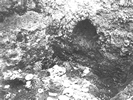| Homepage | Timeline | Maps | A-Z index | Learning |
In the Ptolemaic and Roman Periods Memphis was a major centre of production for high quality faience objects. Petrie excavated one of the faience kilns at Kom Hellul in the southern part of the site. Petrie 1909a: 14: "It (the kiln) was a pit about six feet square and eight feet deep; no hole was traced in the lower part, but more than halfway up there was an arched opening to the west, about two feet wide. This could not be for out-draught as it faces the usual wind; and therefore it seems that the air was admitted to the upper part of the kiln. The supports for the glazed pottery were cylinder jars 10 inches wide and 7 1/2 inches high. The body was of coarse brown and yellow pottery, fusing to a dirty yellow-green." Petrie in Knobel/Midgley/Milne/Murray/Petrie 1911: 34-35: "The kilns lie square one with another, six of them are within a space of 60 to 70 feet... The forms are all square, with vertical side ... they were apparently half sunk in the ground when built. ... The fuel used was straw; we found much carbonized straw in the masses of slag." The area is now being investigated more thoroughly by Paul Nicholson.
(click on the images for a larger picture)
Faience objects from Memphis, not necessarily from the kiln.
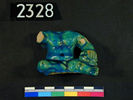 |
 |
 |
 |
 |
For UC 2336 the provenance Memphis is not certain.
Fragments of faience vessels, mainly Ptolemaic
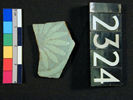 |
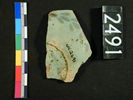 |
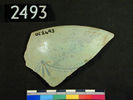 |
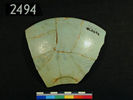 |
 |
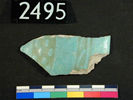 |
Fragments of faience vessels, most of them misfired, 'industrial
waste'; early Imperial Roman
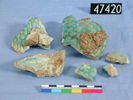 |
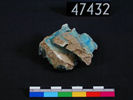 |
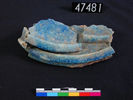 |
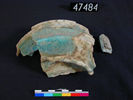 |
 |
Miscellaneous fragments; early Imperial Roman
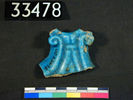 |
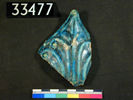 |
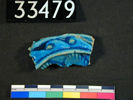 |
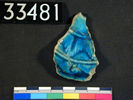 |
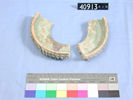 |
Tools/equipment
|
Nile silt saggar for firing faience. Faience is still
inside.
|
Three pointed stand, circular, with trickles of blue
glaze inside.
|
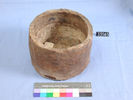 |
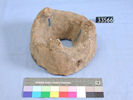 |
